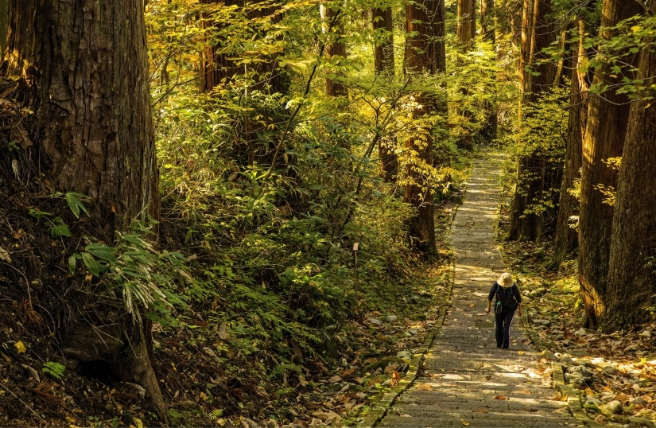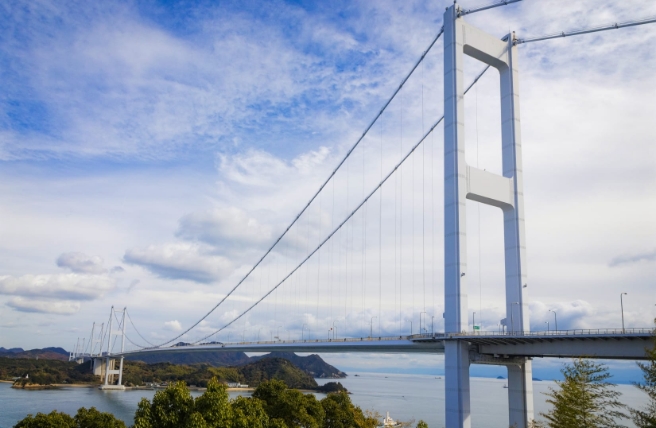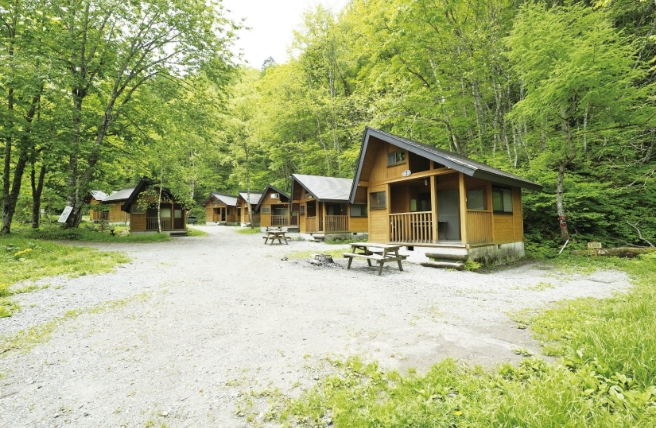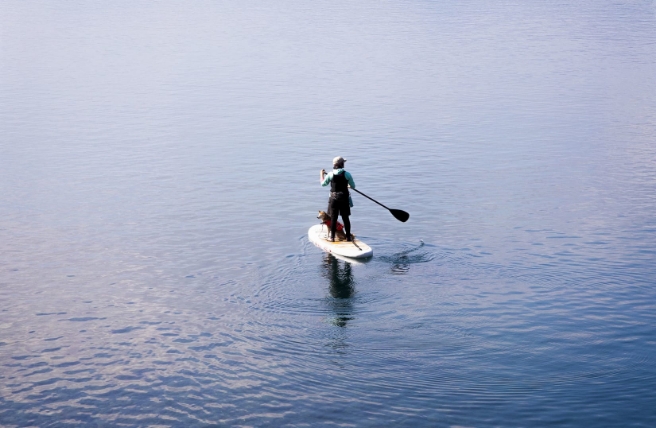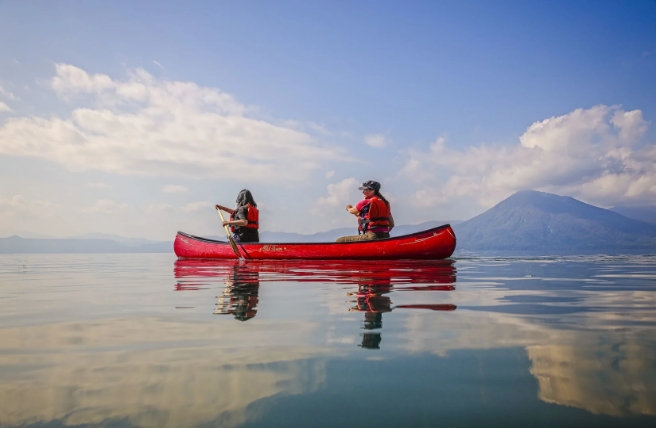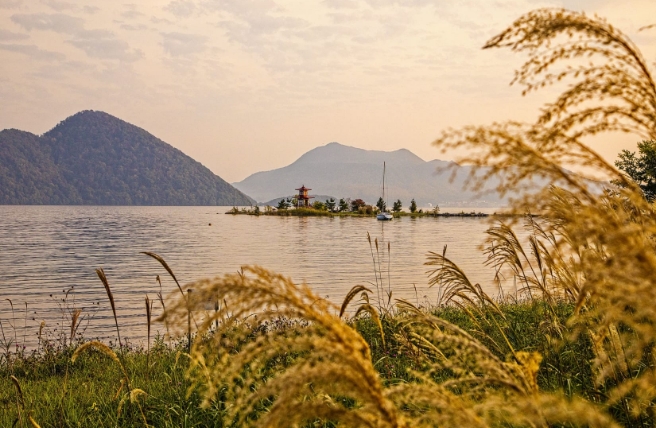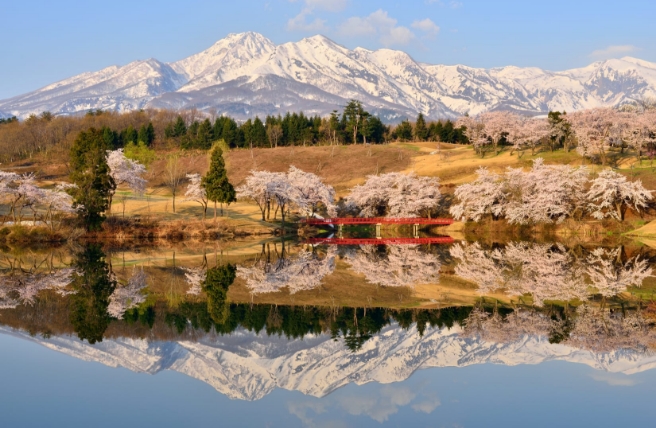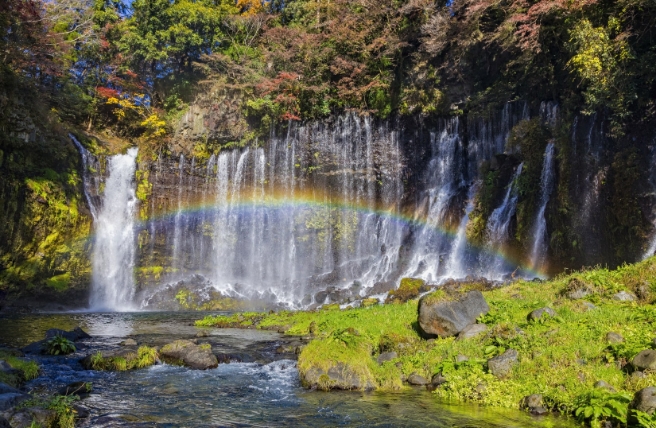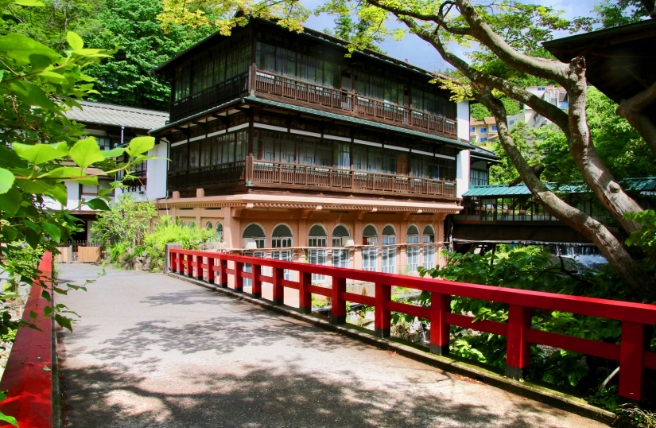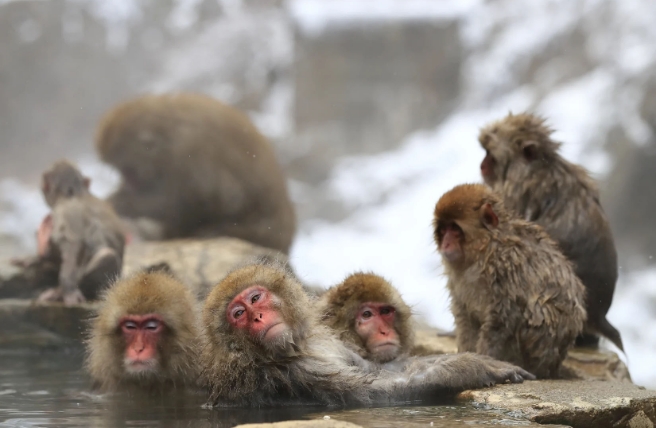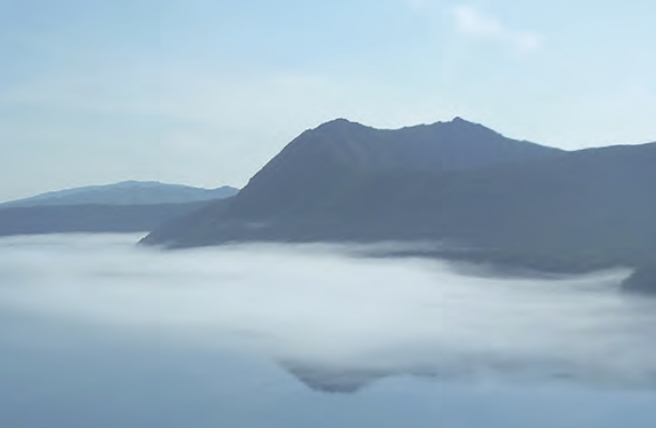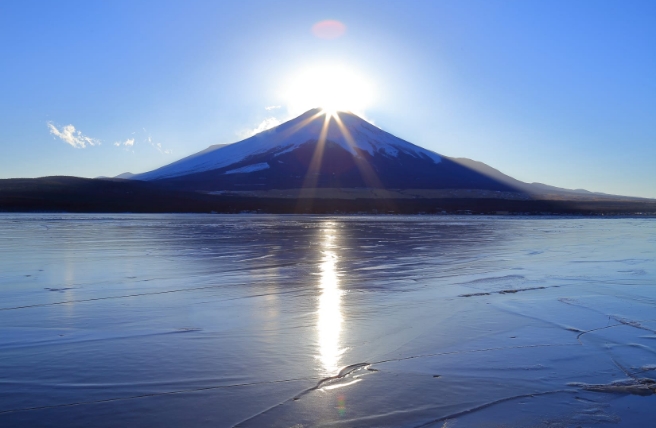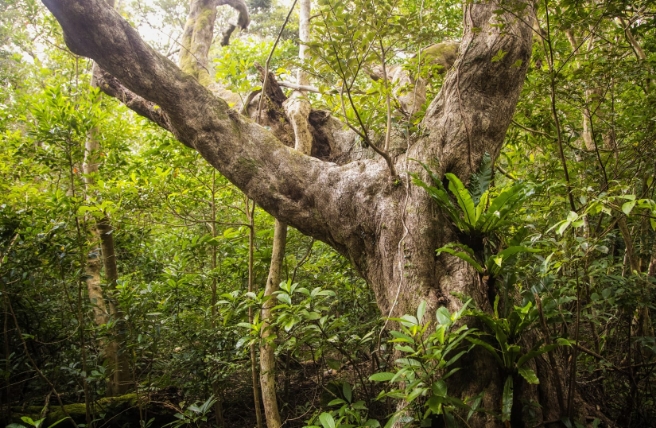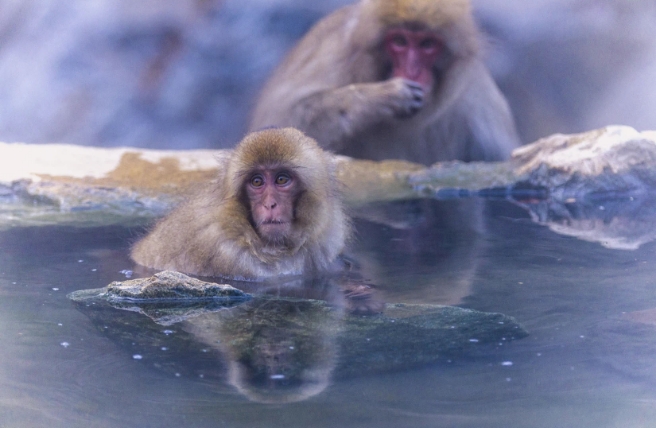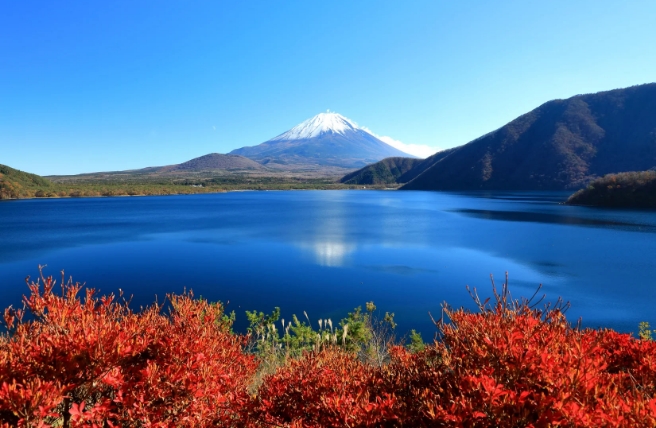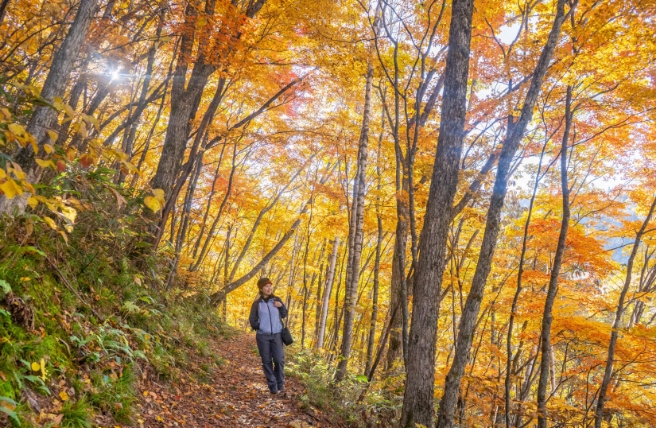Enjoy exploring the many historic sites associated with Japan’s unique Hidden Christian culture in Saikai National Park in Kyushu.
Saikai National Park contains numerous historically important Hidden Christian sites—some of World Heritage status—all within the most beautiful natural setting. This article gives an overview of the park and the history of Christianity in Japan, before introducing a few specific places to visit. These include Kasuga, a famously picturesque village where Hidden Christian culture survives to this day, and a couple of fine abandoned churches on the islands of Nozakijima and Hisakajima. There’s even a cruise option for people who prefer to do their sightseeing from on board ship!
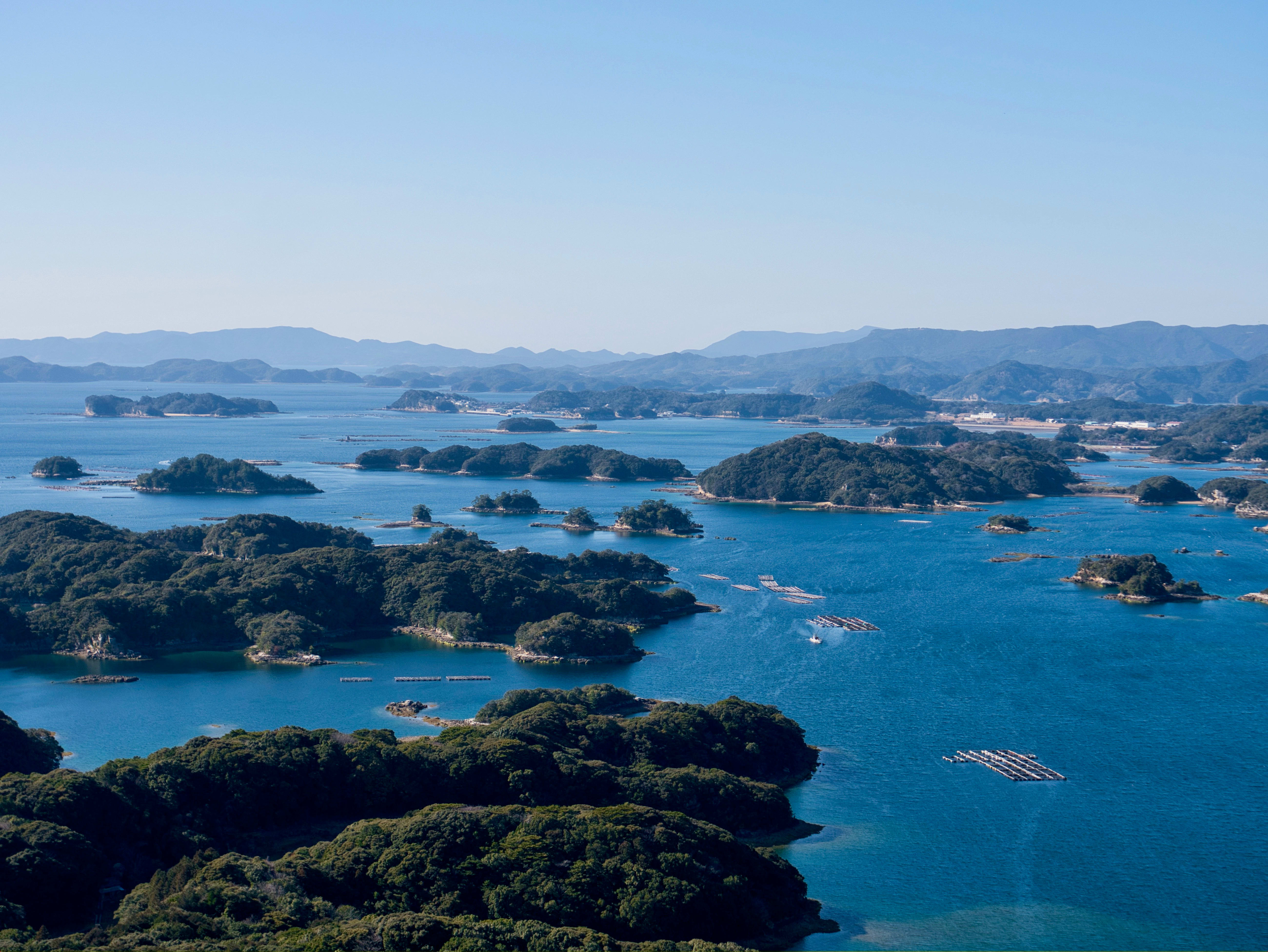
Saikai National Park
Located to the northwest of mainland Kyushu, Saikai National Park contains almost 400 islands of all different shapes and sizes. The landscape is as dramatic as it is diverse, with steep sea cliffs, dendritic drowned valleys, volcanic landforms, tidal flats and gorgeous beaches.
There is abundant marine life in the seagrass beds and tidal flats, while on land there is a mixture of grasslands and secondary broadleaf forest. The park is also a migratory pathway for many migrant birds.
The local history is equally rich. This area was once the center of Japan’s whaling industry, while Sasebo (which adjoins the park) was developed as one of the Imperial Japanese Navy’s five strategic ports in the late nineteenth century. However, the most unique and important aspect of the park’s history must be its link to Christianity.
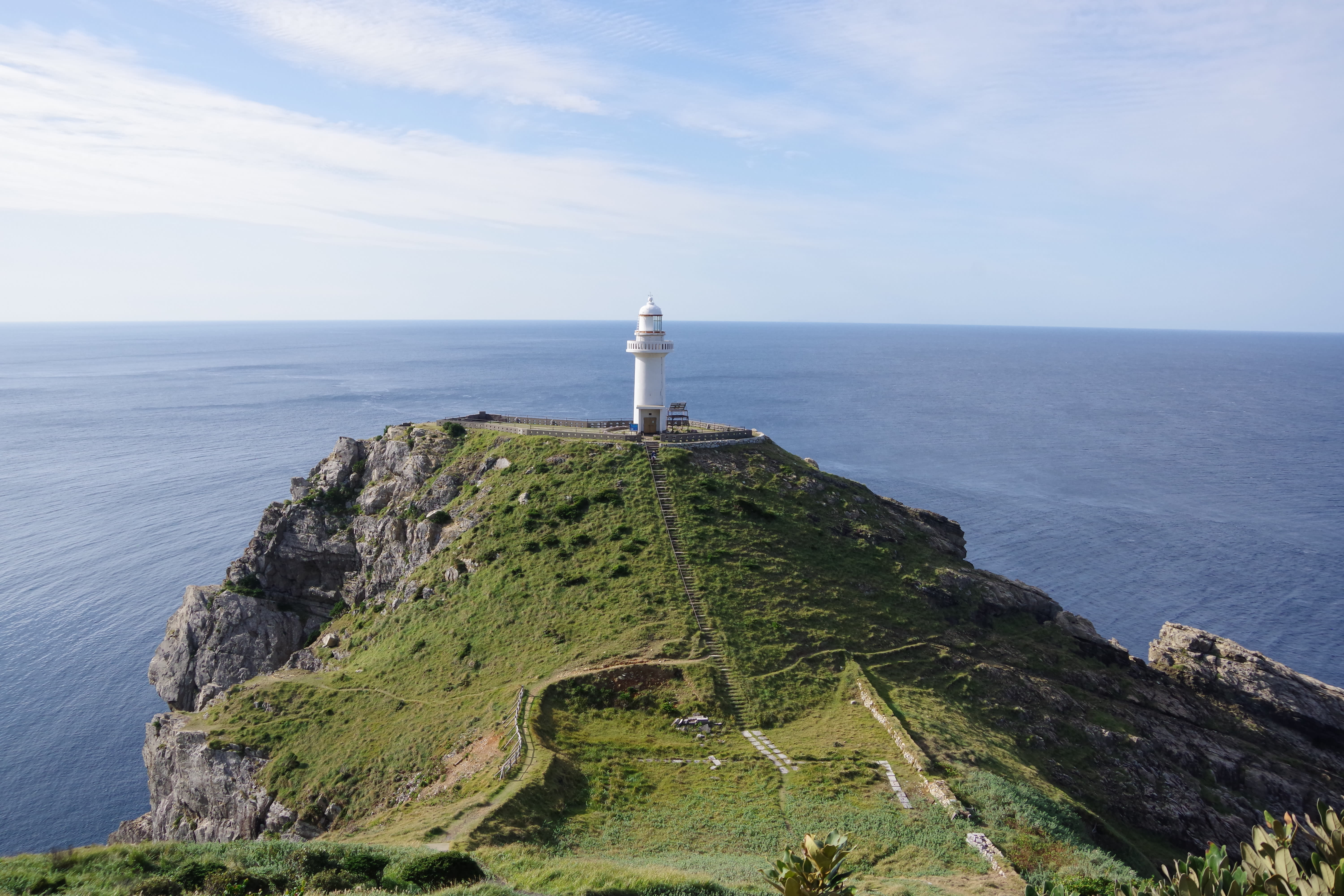
Christianity and the Hidden Christians
After trade between Japan and Portugal got underway in the early 1540s, the propagation of Christianity in Japan began with the arrival of Francis Xavier in Kagoshima, at Kyushu’s southern tip, in 1549. A number of feudal lords in the Nagasaki region converted to Christianity and the people living in their domains often followed suit. Japanese Christianity was concentrated in and around Nagasaki. At its height, the Christian population was estimated at around 300,000.
But it did not take long for Japan’s leaders to get suspicious of the new religion. Starting in 1587, a series of increasingly harsh edicts were promulgated, expelling the Christian fathers, prohibiting Christianity and banning Spanish and Portuguese trading vessels. 1644 is seen as the cut-off date when Japanese Christianity went fully underground.
The foreign missionaries had appointed influential residents to act as local faith leaders. Thanks to the existence of this self-sustaining organizational structure, Christianity could continue even when the last foreign missionaries were gone. The local Christian communities—who were now “Hidden Christians”— would gather secretly in the houses of religious leaders for prayers, while venerating the places where their Christian ancestors had been martyred or buried.
Over time, the influence of Japanese traditions on Japanese Christianity, which had always been there, became increasingly pronounceds. The pronunciation of Latin and Portuguese prayers became garbled and certain prayers and ceremonies were altered by the influence of folk religions. Sometimes the Christians would merge their rituals with Shinto and Buddhist rituals to camouflage their activities and protect themselves. They often had Buddhist and Shinto altars on display in their houses, while secretly worshipping Christian objects of devotion, such as scourges and holy water, which they kept safely hidden in the closet.

Exploring Kasuga and its environs
One place where the traditions of the Hidden Christians were maintained—even after 1873 when the ban on Christianity was lifted and many Japanese Hidden Christians rejoined the conventional Catholic church—is Kasuga, a small village of around 55 people (as of May 1, 2024) on the west coast of the island of Hirado, that sits in an unchanged landscape of terraced rice fields. (Hirado was an important port for trading with Portugal in the second half of the sixteenth century.)
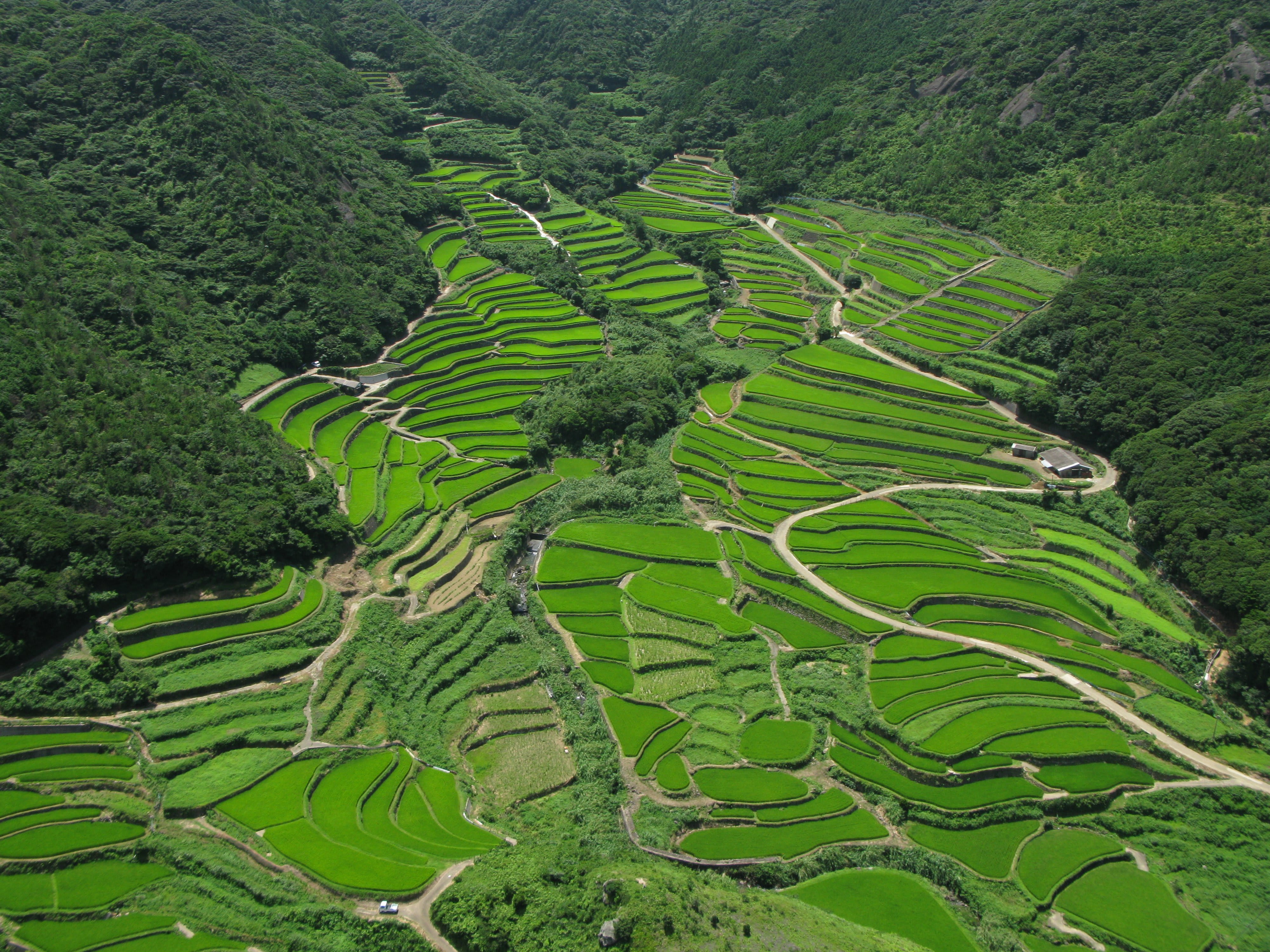
At Katarina, Kasuga’s tourist information center, you can get a sense for Hidden Christian culture from the devotional objects on display there. These include a framed piece of calligraphy, amulets and a ceremonial scourge. The center is run by local elderly people, who also serve tea and their own home-made pickles and snacks there.
Now you’re briefed and refreshed, it’s time to get out into the extraordinary landscape. At 536 meters, Mt. Yasumandake is the tallest mountain on Hirado. Originally a place of pilgrimage for yamabushi mountain ascetics, it later became sacred to Kasuga’s Hidden Christians.
A second place sacred to Kasuga’s Hidden Christian community is Maruoyama, a smaller hill which sits at the foot of Mt. Yasumandake. A large cross is believed to have stood there when such open displays of Christianity were allowed. Archeologists have also discovered the remains of a Christian graveyard, the site of which is now marked by a small stone shrine.
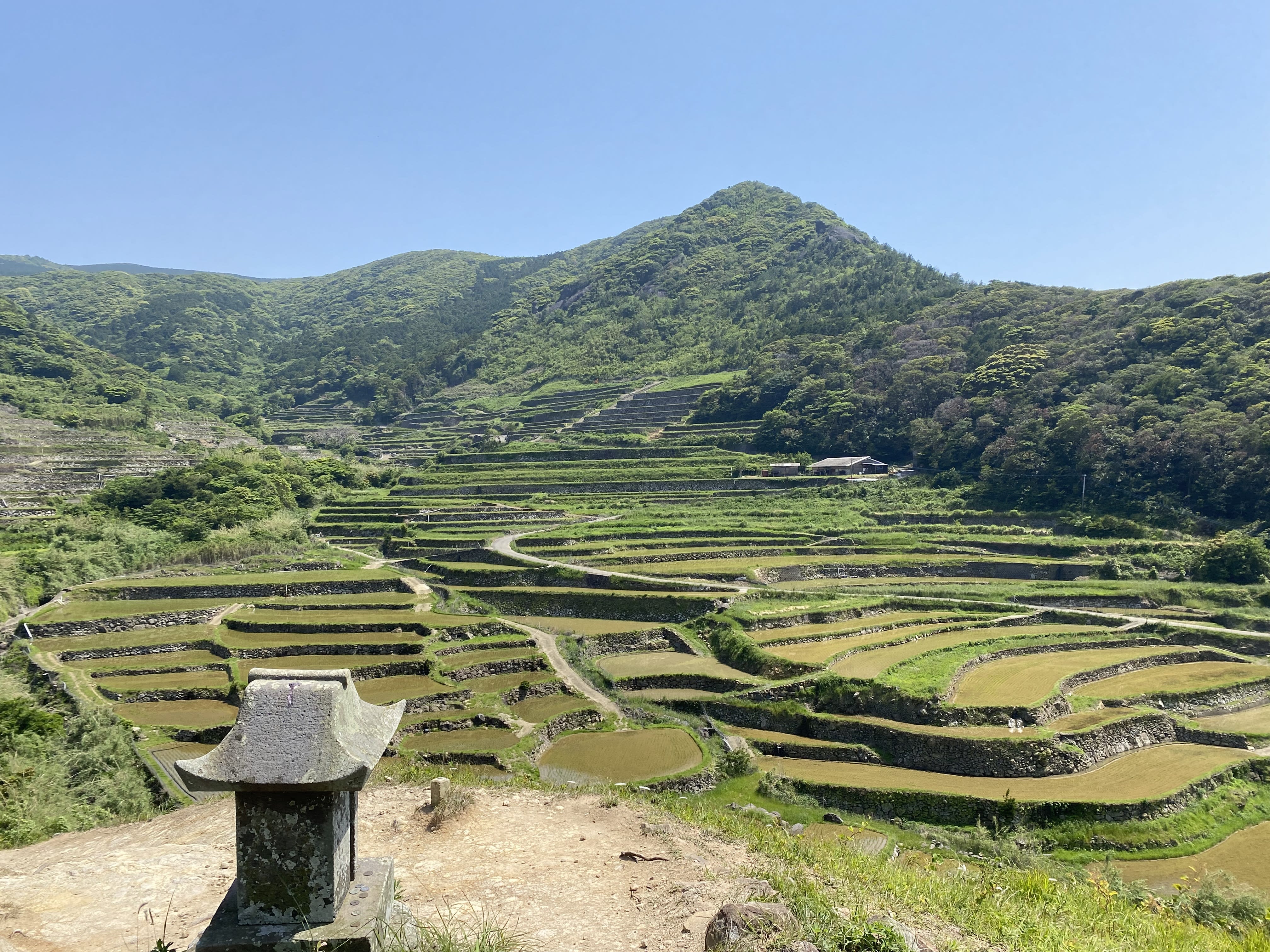
Nakaenoshima: A sacred island
Located to the northwest of mainland Kyushu, Saikai National Park contains almost 400 islands of all different shapes and sizes. The landscape is as dramatic as it is diverse, with steep sea cliffs, dendritic drowned valleys, volcanic landforms, tidal flats and gorgeous beaches.
There is abundant marine life in the seagrass beds and tidal flats, while on land there is a mixture of grasslands and secondary broadleaf forest. The park is also a migratory pathway for many migrant birds.
The local history is equally rich. This area was once the center of Japan’s whaling industry, while Sasebo (which adjoins the park) was developed as one of the Imperial Japanese Navy’s five strategic ports in the late nineteenth century. However, the most unique and important aspect of the park’s history must be its link to Christianity.
Nakaenoshima: A sacred island
Nakaenoshima, an uninhabited island just 400 meters long and 50 meters wide, sits around two kilometers off the coast. A large number of local Christians were executed on Nakaenoshima, making it a sacred place for the local Hidden Christian community. As well as venerating the island, they visited it to collect the water that seeps from the rocks, which they treated as Holy Water, a ceremony which continues to this day. (Note that it is not possible to visit Nakaenoshima.)

Nozakijima: Abandoned villages and a well-preserved church
Thirty kilometers away to the west of Hirado is Nozakijima. This was one of several remote islands in this region that Hidden Christians from Sotome migrated to at the end of the eighteenth century. Once upon a time, several hundred people lived in the island’s three villages of Nozaki, Nokubi and Funamori. Now, however, the villages are abandoned and ruinous, and the island uninhabited, bar a tiny handful of people taking care of visitors.
After the ban on Christianity was lifted in 1873, the Christians of Nokubi gradually gained the freedom to worship openly and they constructed a wooden church in 1882 on high ground about one kilometer from the harbor. In 1908, the wooden structure was replaced by a brick church designed by architect Yosuke Tetsukawa. Seventeen local Christian families financed its 3,000-yen building costs (a princely sum at the time). The church started to fall into disrepair after the island emptied out, but the local government stepped to restore it in 1985. (Note that the church is closed for restoration at the time of writing. It is scheduled to reopen on November 8, 2025.)


On a practical note, since the church is only open between 9:00 to 14:00, you will need to get an early ferry to the island to get in. The island itself is wild, with large populations of deer, boar and snakes, and has a unique atmosphere, so it’s a good idea to give yourself time to walk around.
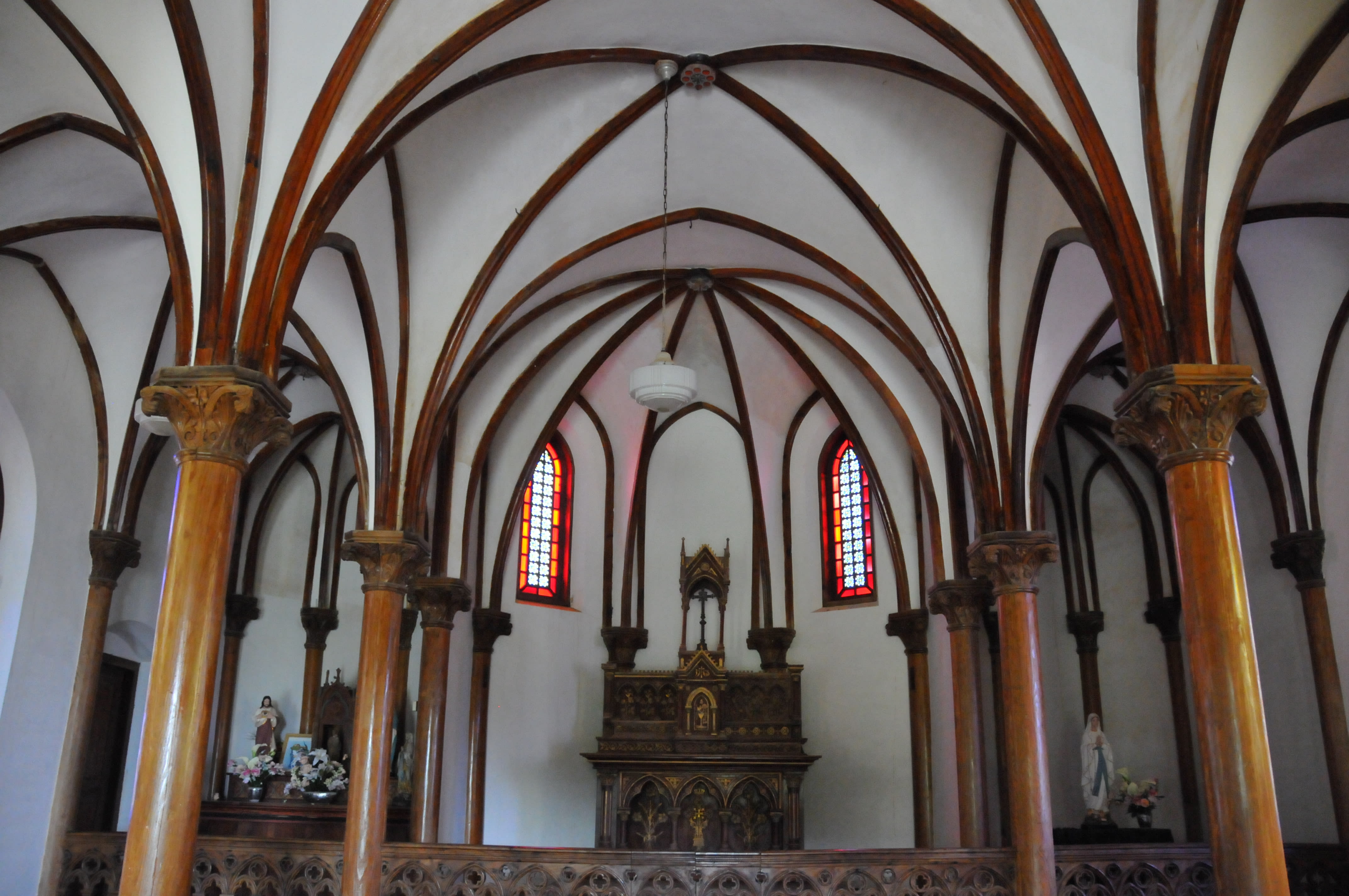
Hisakajima: A church that moved by sea
The majority of Hidden Christian migrants from Sotome went to the Goto Islands, an archipelago of five main islands situated just below Nozakijima. The second most southerly of the five is Hisakajima, an island with four villages and a population of a few hundred. The best-known site there is the Former Gorin Church, a low-slung wooden Gothic edifice on the east coast of the island.
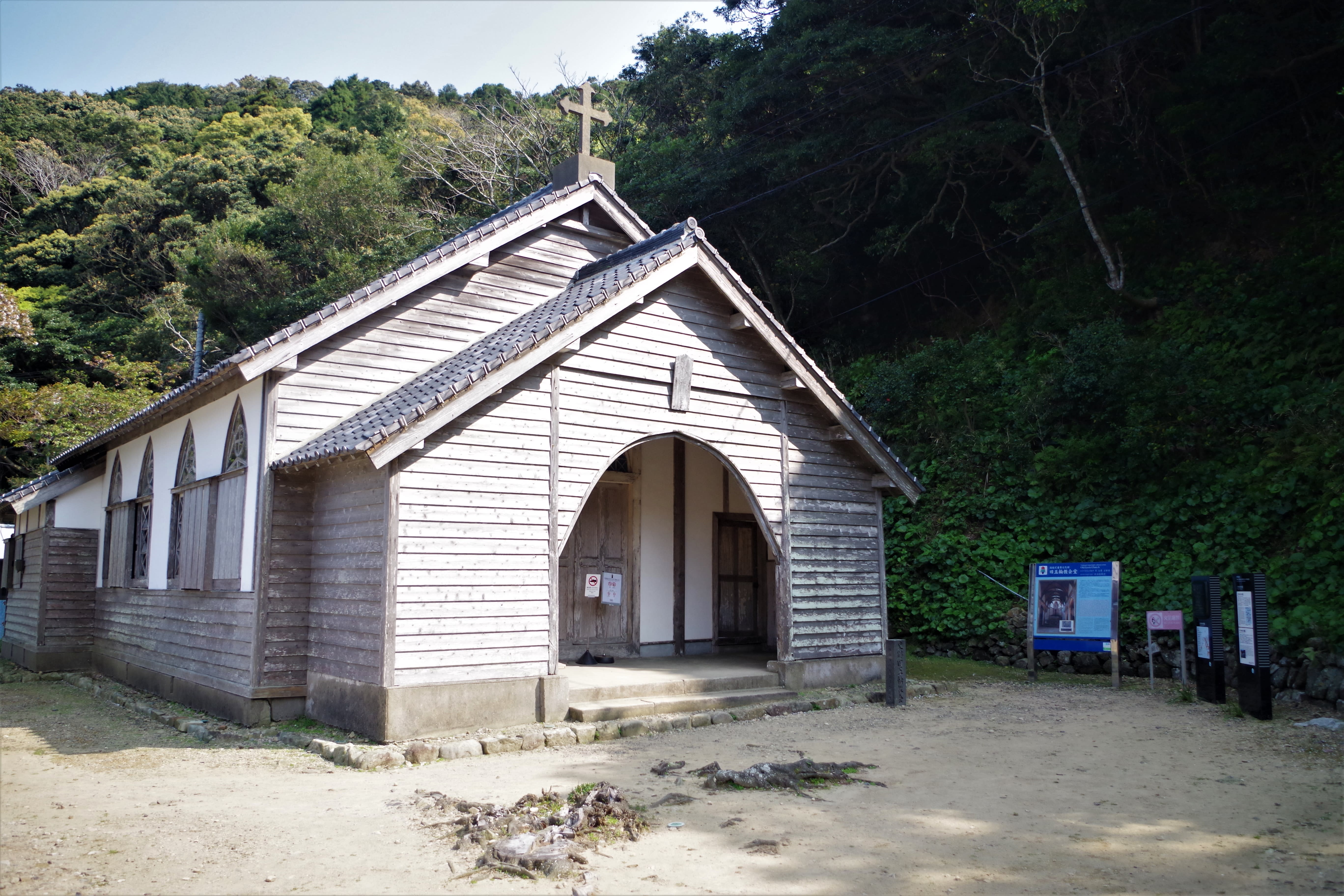

Built in 1881, this church originally stood in Hamawaki on the opposite side of Hisakajima. When, however, Hamawaki got the Goto Islands’ first-ever steel and concrete church in 1931, the old church was dismantled and transported by raft to Gorin, a hamlet with no church of its own, where it was rebuilt right on the seashore. A new church made of more solid materials was built beside the wooden one after it suffered typhoon damage in 1984.

Cruising
One great way to enjoy the spectacular scenery of the Goto Islands and the Hidden Christian sites there is to take a boat tour. During the roughly 90-minute-long Wakamatsu Seto Cruising Basic Plan, which sets off from Wakamatsu harbor, you will see farm-raised bluefin tuna, table corals and the Wakamatsu Bridge (which connects Wakamatsu to neighboring Nakadori), as well as Harinomendo, a natural aperture in the coastal rocks which is thought to resemble the silhouette of the Virgin and Child and the Christians’ Cave, now marked by a white statue of Christ and the Cross, where once upon a time Hidden Christians took refuge from persecution. The last place on the cruise is Kiri Church, a striking white church from 1958 that stands onhigh ground on the island of Nakadori overlooking the sea.
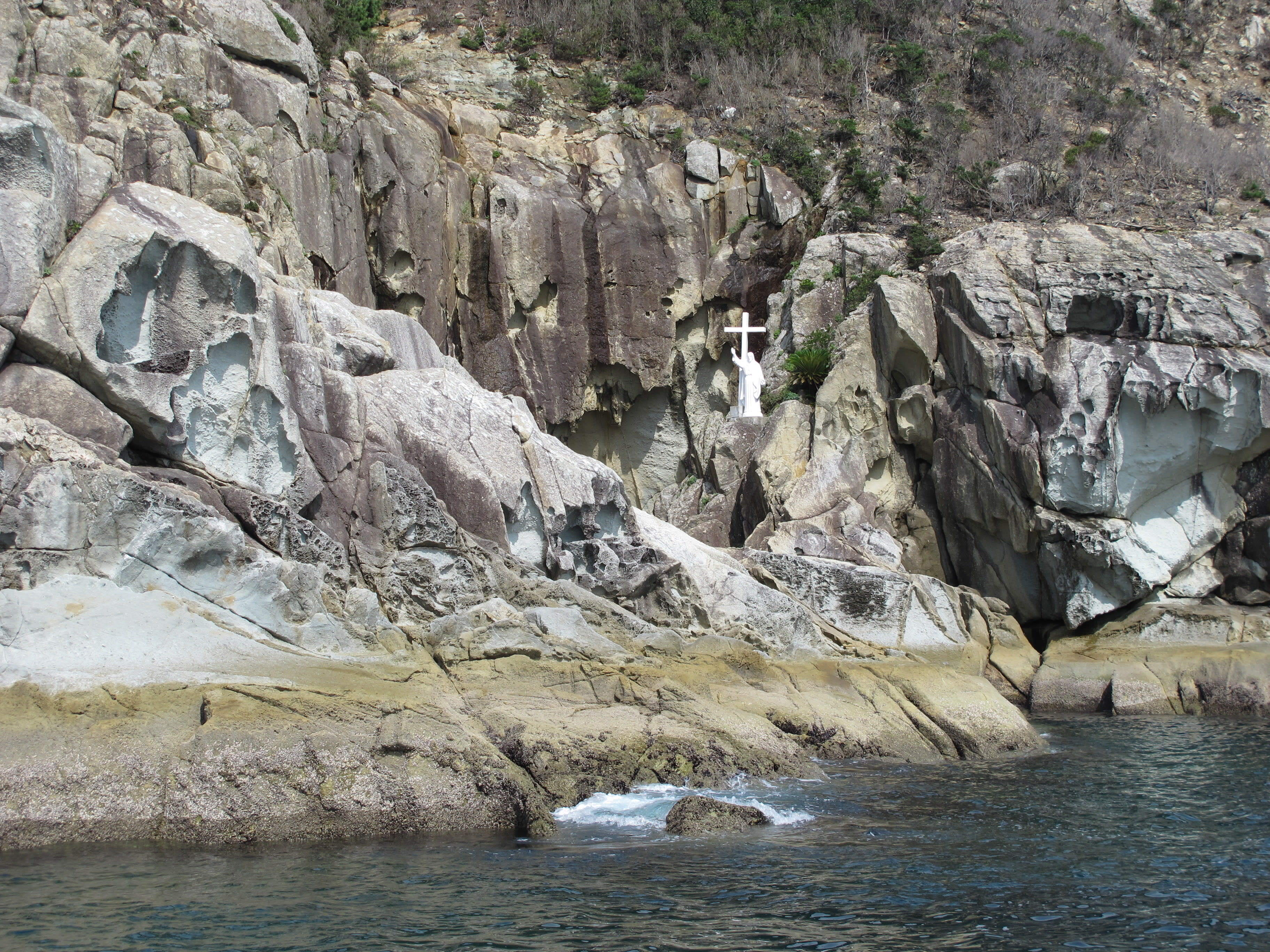

Another, even more substantial option is the Goto Islands Hidden Christian Cruise. This four-hour cruise, which starts from Fukue Island, takes in the Former Gorin Church on Hisakajima and Egami Church on Narushima, in addition to everything in the basic Wakamatsu cruise above.

Doing your part to protect the parks
- When visiting the churches, please follow the visiting rules as found on the official website “World Cultural Heritage: Hidden Christian Sites in the Nagasaki Region.”
- Do not land on uninhabited islands without permission
- When travelling by sea, be aware of the weather and the impact it may have on your travel plans.
